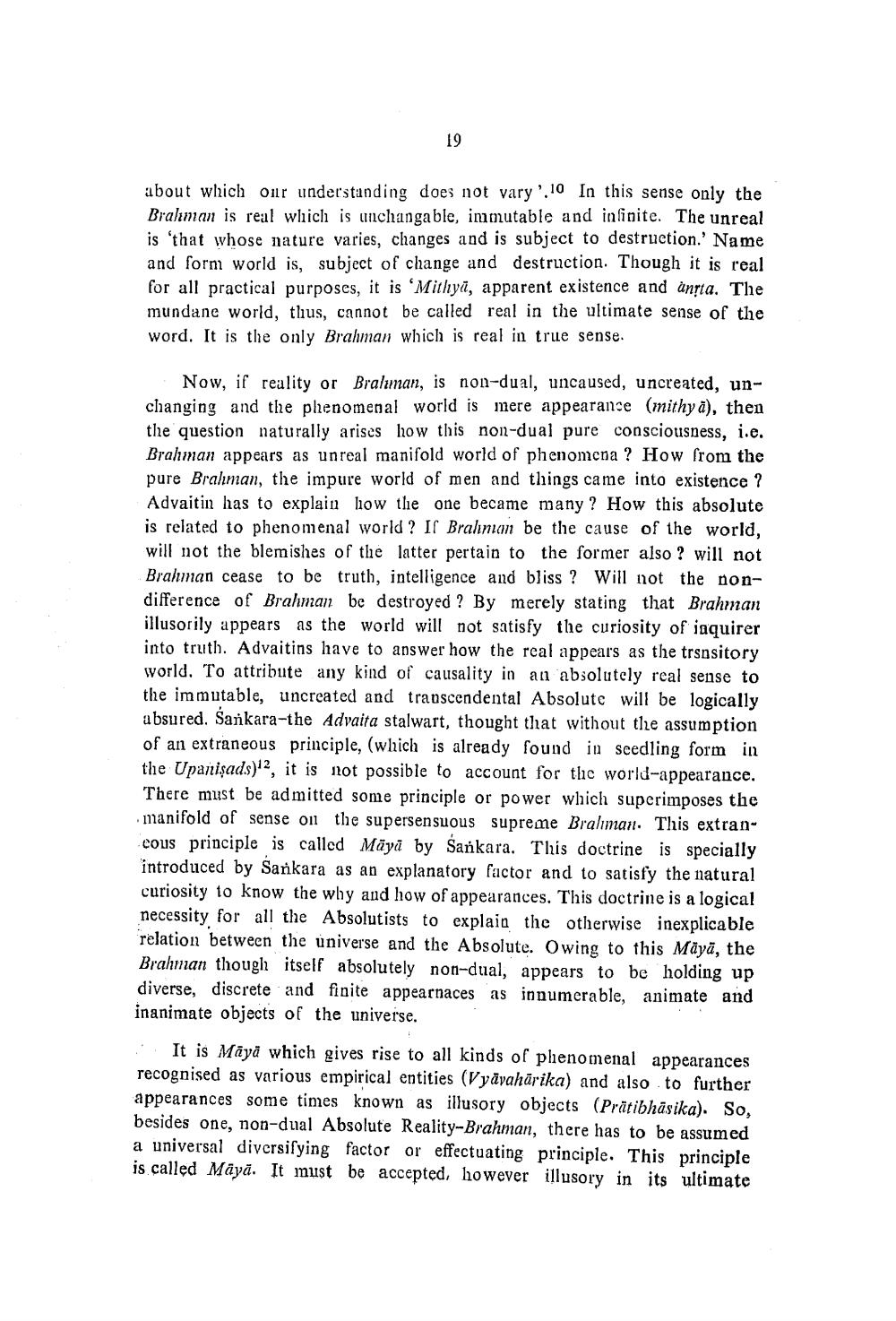________________
19
about which our understanding does not vary': 10 In this sense only the Brahman is real which is unchangable, immutable and infinite. The unreal is 'that whose nature varies, changes and is subject to destruction.' Name and form world is, subject of change and destruction. Though it is real for all practical purposes, it is 'Mithya, apparent existence and unsta. The mundane world, thus, cannot be called real in the ultimate sense of the word. It is the only Brahman which is real in true sense.
Now, if reality or Braluman, is non-dual, uncaused, uncreated, unchanging and the phenomenal world is mere appearance (mithy a), then the question naturally arises how this non-dual pure consciousness, i.e. Brahman appears as unreal manifold world of phenomena ? How from the pure Brahman, the impure world of men and things came into existence ? Advaitin has to explain how the one became many? How this absolute is related to phenomenal world ? If Brahınıan be the cause of the world, will not the blemishes of the latter pertain to the former also ? will not Brahman cease to be truth, intelligence and bliss? Will not the nondifference of Brahman be destroyed ? By merely stating that Brahman illusorily appears as the world will not satisfy the curiosity of jaquirer into truth. Advaitins have to answer how the real appears as the trsnsitory world. To attribute any kind of causality in an absolutely real sense to the immutable, uncreated and transcendental Absolute will be logically absured. Sarkara-the Advaita stalwart, thought that without the assumption of an extraneous principle, (which is already found in seedling form in the Upanişads)'?, it is not possible to account for the world-appearance. There must be admitted some principle or power which superimposes the manifold of sense on the supersensuous supreme Braliman. This extrancous principle is called Māya by Sankara. This doctrine is specially introduced by Sankara as an explanatory factor and to satisfy the natural curiosity to know the why and how of appearances. This doctrine is a logical necessity for all the Absolutists to explain the otherwise inexplicable relation between the universe and the Absolute. Owing to this Mäyä, the Brahman though itself absolutely non-dual, appears to be holding up diverse, discrete and finite appearnaces as innumerable, animate and inanimate objects of the universe.
It is Māya which gives rise to all kinds of phenomenal appearances recognised as various empirical entities (Vyävahārika) and also to further appearances some times known as illusory objects (Pratibhāsika). So, besides one, non-dual Absolute Reality-Brahman, there has to be assumed a universal diversifying factor or effectuating principle. This principle is called Mäyä. It must be accepted, however illusory in its ultimate




